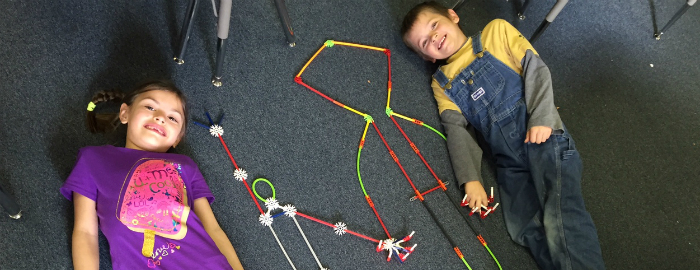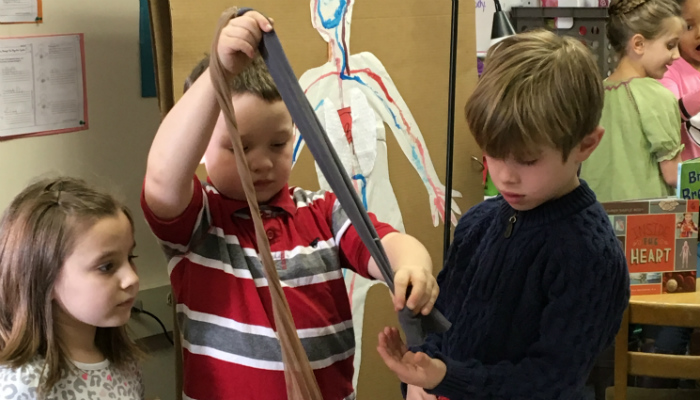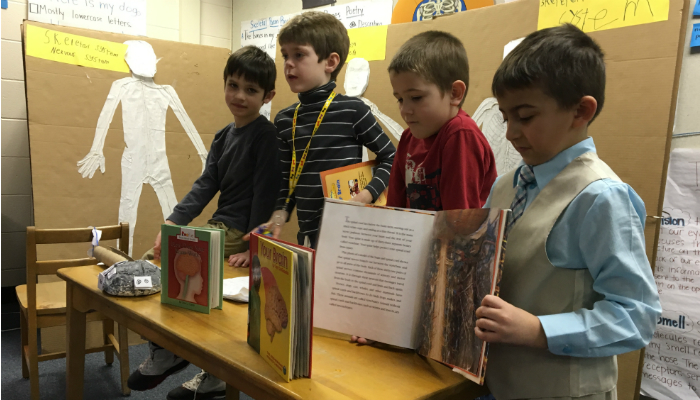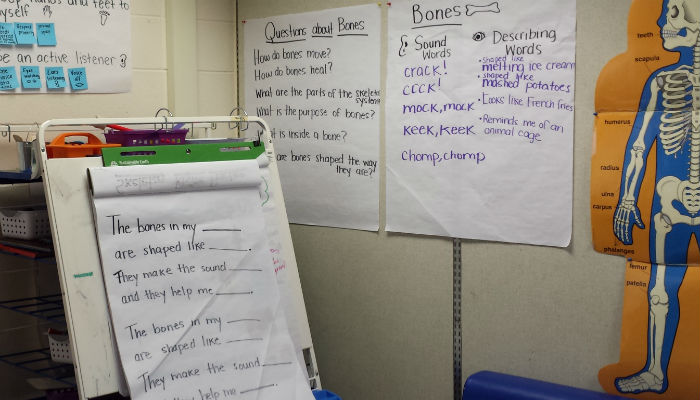
As a supporter of our schools, I was invited to a first grade Exhibition of Learning (EOL). I wasn’t sure what to expect. I’ve attended EOLs for our high school students. They are amazing. But, I’ve also spent lots of time with first graders. I wasn’t sure how what I understood about EOLs would be translated by first graders.
When we arrived, parents (and guests) were given instructions and an overview for questioning, the process, and the focus of the EOL. The essential questions were, “How does the human body work? What are the systems? How do the systems work together?” Wow.
A short video was shared that highlighted student-written poetry about the human body systems. They created and recorded music to accompany their poems. Students explored how musicians make creative decisions using concepts of fast and slow, loud and soft, and high and low. Students chose which instruments would create the sounds that they wanted to match the words in their poems. They also chose the volume and speed. Student-created poetry and music integrated into their project’s essential questions while meeting core standards. I was impressed.
Skeleton Poem (Mrs. McKeone’s Class’ Poetry)
The bones in my toes
Are shaped in rows.
The make the sound sok
They help me to walk.
The bones in my back
Are shaped like a stack
The make the sound crack
They help me to pack.
The next component of the EOL was incorporating movement into the project, specifically yoga. The students’ sat on their yoga mats and welcomed parents to join them. Each student had a role in leading a yoga movement. They led us through calming exercises and the sun salutation. I asked the students how yoga made their bodies feel. A roomful of first graders answered “happy” and “calm.” “Does it make your body feel strong?” “YES!” Strong minds and strong bodies.
The rest of the EOL was done through a gallery walk. Small groups shared 3-D models they created to represent different body systems. They also presented what they learned about the body system they were showcasing. Groups of students presented on their projects by stating the essential questions, discussing their process, encouraging questions, and talking about what they learned and how they problem solved. Four groups were doing this at the same time in their “gallery” classroom.
Each group followed these steps:
Observe / Discover: Observe and Research
Plan: Talk about their plan; Sketch the plan; and Check in with the teacher
Create: Create the design; All hands in
I learned more about the project from a previous blog post.
The students researched, created, checked in with their teacher, revised, and revised again. They problem-solved how to interpret what they learned about body systems in their creation of body system 3-D models. I was listening and watching as these first graders demonstrated how the body systems worked and how they created their models with clay, bags, rubber bands, glue, and other supplies. It dawned on me that these students weren’t just solving one problem, but many.
The group presenting on the muscular system showcased their 3-D model and demonstrated knowledge of the muscular system. However, they also discussed what they did to create the model of a hand with rubber bands that represented muscles. Pulling on the rubber bands at certain places created movement in the fingers. It took trial and error to find success with this model. The students explained that initially they had straws in rubber gloves surrounded by rice. Unfortunately, they found out that the straws poked through the gloves when they pulled on the rubber band muscles. What to do? Remove the straws and completely fill the glove with rice. It worked! This was creative, high level thinking based on improvement through feedback and reflection.
For parents and teachers at ESAA, exhibition is part of the process. For me, it was reinforcement of why I support the project-based education taking place at the school. It wasn’t perfect. These are first graders after all. There were times when it was wiggly, silly, and a little messy. Thank goodness – we are creating thinkers, not creating robots!
It was exciting to see learning taking place through creativity, feedback, and reflection. I wonder what would happen if all students in all schools were given the opportunity to observe, research, create, receive feedback, reflect, revise, and learn. As a school always striving for improvement, ESAA will examine the feedback from parents, teachers, students, and others on the EOLs. We will reflect, and we will revise. It’s exciting to have a process that works. Way to go, first graders!





